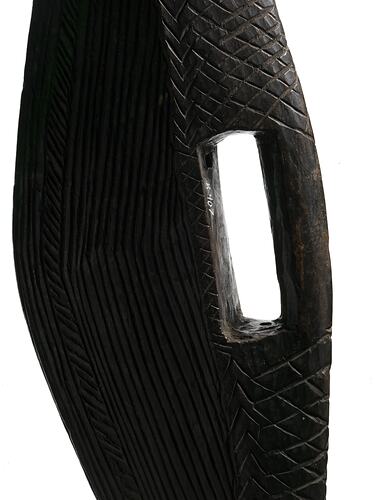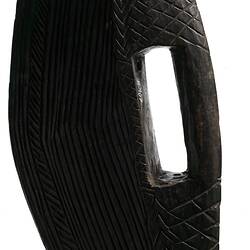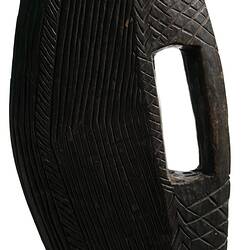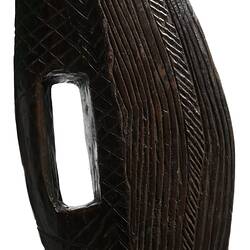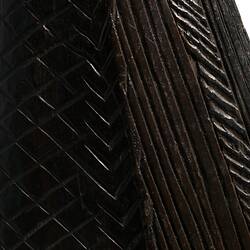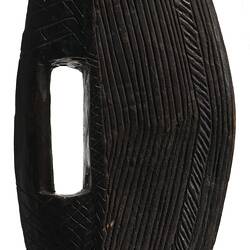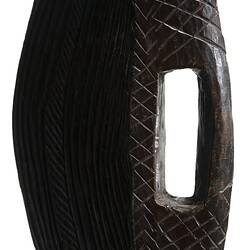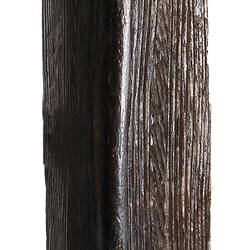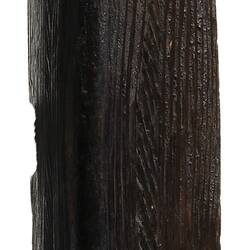Summary
Unfortunately, ignorant theories about the supposed racial inferiority of Aboriginal people in the early colonial period resulted in many collected Aboriginal artefacts having uncertain provenance. Specific cultural groups, maker's names and Country were often not recorded. Although the maker of this yangku (shield) was not recorded it is known that it comes from the Darling River region of western New South Wales which the Barkindji peoples have continuously occupied for countless generations. Aboriginal people living along the Darling River call it the Barka, and their name Barkindji means 'belonging to the river'. Pre-contact the Barkindji occupied an area of around 19,500 square kilometres in the Darling River basin. One of the first European settlers in this area obtained this intricately carved yangku (parrying shield) from a Barkindji man around the 1840s.
Highly respected Barkindji artist and language advocate Murray Butcher speaks of his peoples continuous relationship to their Country;
"We've been lucky as Barkindji people in that most of us have been able to remain in our country and maintain our links to our Country, our families, our story, our culture, and that is still strong today. We may have got dispersed, but we are still able to live and survive in our own Country."
Murray Butcher, 2016
In 2015, after an intensive 18-year fight, the Barkindji people won their Native Title claim which involves pockets of land spread across 128,000 square kilometres of Barkindji country which extends from the South Australian border to Tilpa in the east, Wentworth in the south, north almost to Wanaaring. Within this huge area lie the towns of Broken Hill, Wilcannia and Menindee.
Local Name
Drunmung
Physical Description
Shield with handle carved out of solid. Anterior bowed; posterior bulge at handle. Anterior features a linear pattern in parallel lines with one thick striped band amongst them. Posterior shows cross hatching. Decoration extends on both sides and at both ends of shield except for handle which is undecorated. Elliptical in cross section.
Significance
Such graceful bow-shaped parrying shields with ornate engraved designs were characteristic of the artistic culture of New South Wales and Victoria. The shield's linear designs form part of a visual language. Each shield had a unique design on it, but particular forms and patterns identified the country and group of the shield's maker. Similarly ornate designs were engraved on clubs, boomerangs, possum-skin cloaks and trees. During ceremonies and dance similar designs were painted in red and white ochre on the participants' bodies.
This shield was part of the large amount of south-eastern Australian material culture taken overseas in the 19th and 20th centuries. It came into the Museum collection in 1995, part of a donation by an international collector.
More Information
-
Object/Medium
Shield
-
Maker
-
Locality
-
Date Produced
-
Collector
-
Object Measurements
810 mm (Length), 145 mm (Width), 40 mm (Height)
-
Classification
-
Date Made
-
Maker
-
Clan/Language Group
-
Place Made
-
Indigenous Region
-
Keywords
-
Collection Names
-
Type of item
-
Discipline
-
Category
-
Collecting Areas
